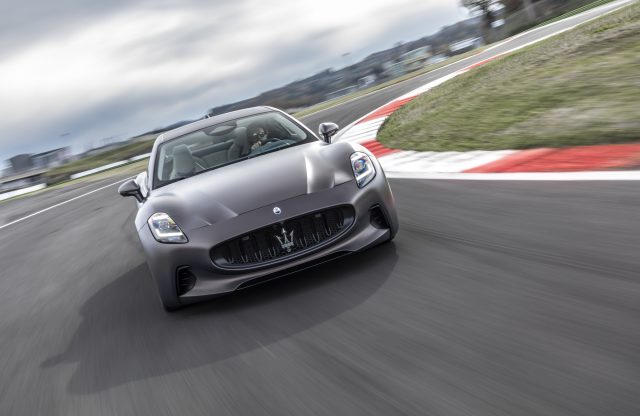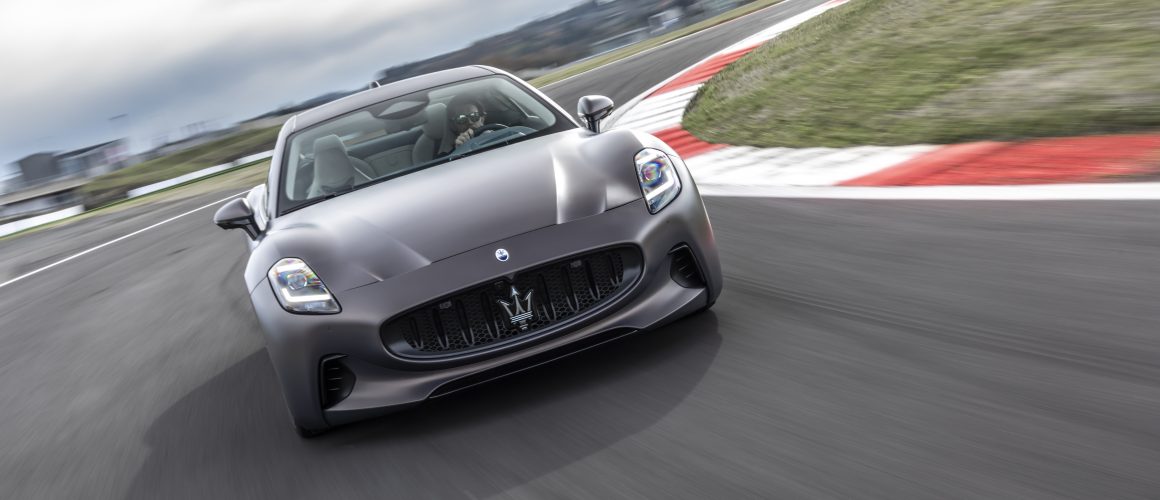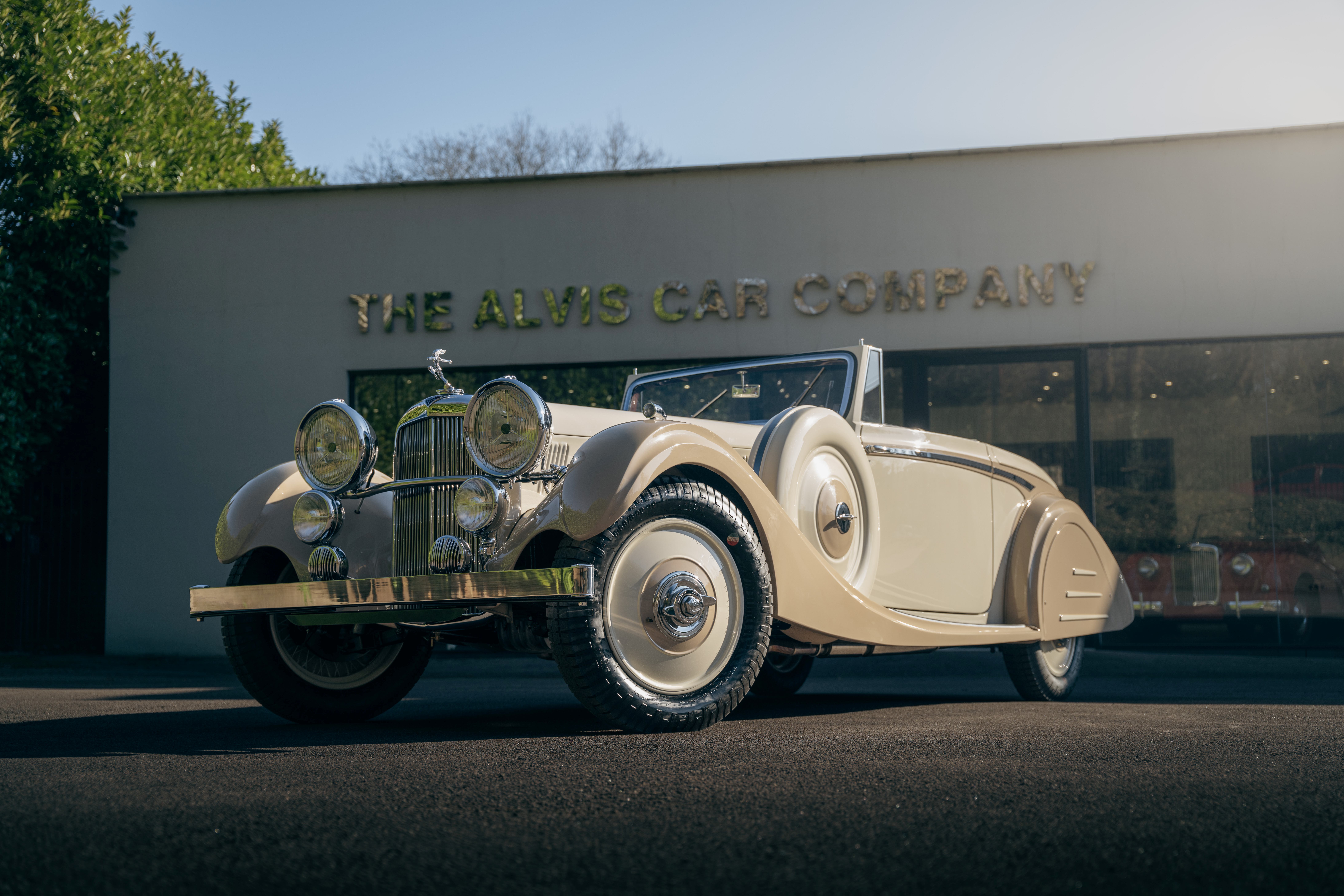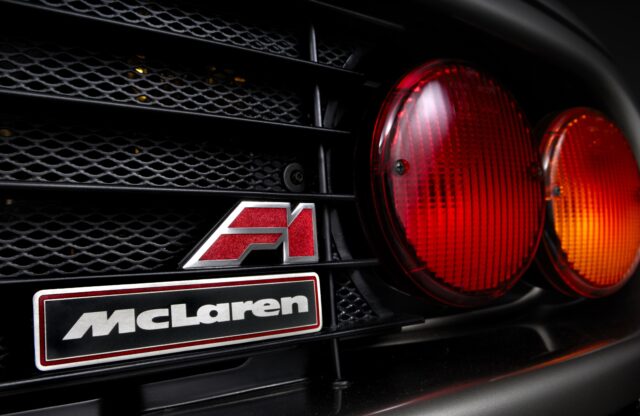WORDS: ELLIOTT HUGHES | PHOTOGRAPHY: MASERATI
There’s something intangibly magical about Maserati. “Mah–ze–rah–tee.” Even the word itself sounds bewitching and seductive. Then there are the cars themselves. Picture a Maserati, and you’ll probably think of a continent-crossing grand tourer that’s achingly beautiful with a sonorous V8 and sumptuous leather.
At first glance, there’s absolutely nothing about Maserati’s newest model, the GranTurismo Folgore, that suggests a radical departure from the recipe. The bodywork is just as sculptural and elegant as you’d expect; you’ll find no vulgar winglets, canards or strakes here. Instead, there are flashes of chrome, a swooping roofline and an enormous aluminium clamshell bonnet, all present and correct.
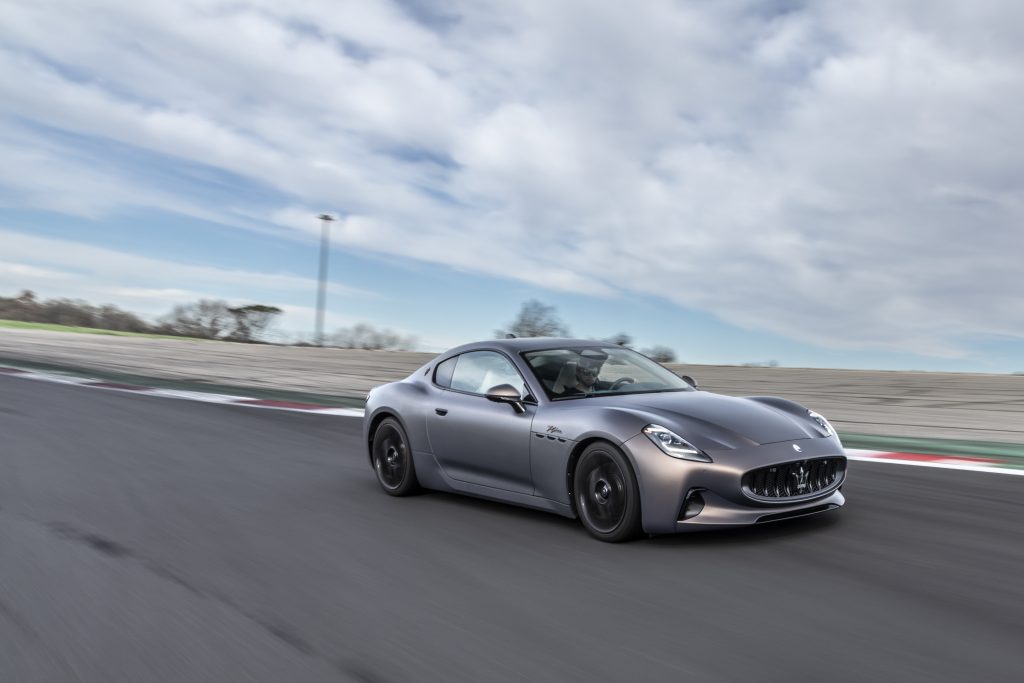
Lurking under such a massive bonnet is typically a very large and very powerful engine, as was the case with the previous-gen GranTurismo and its glorious Ferrari V8. Looks can deceive. Folgore roughly translates to ‘lightning’ in Italian, which means – you’ve guessed it – the GranTurismo parked before me in the pitlane of Vallelunga Circuit is the marque’s first EV.
Arriving soon will be Folgore versions of the MC20 supercar and Grecale SUV, and every model will be available with an all-electric powertrain by 2025. There will be no more combustion-powered Maseratis after 2030. In other words, the GranTurismo Folgore isn’t just a peek into the future; it’s also one of the most important models – if not the most important model – to ever wear the trident of Bologna.
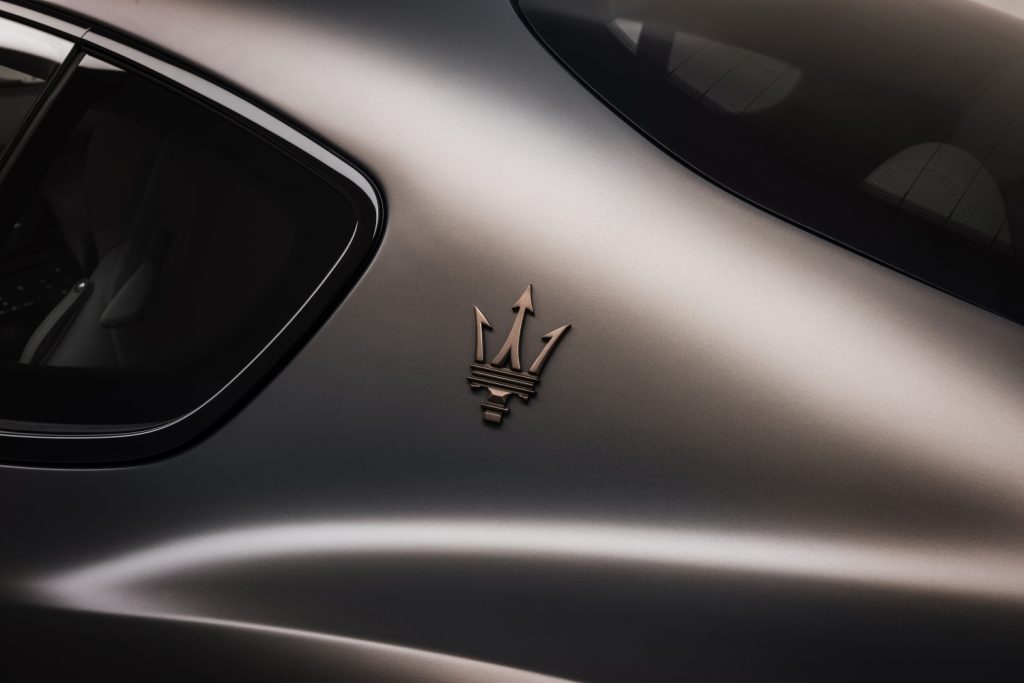
The stat sheet suggests that things are off to a strong start. A huge 92kWh battery pack powers three permanent magnet e-motors (two at the rear, one at the front) that combine for 750bhp and 995lb ft. That means 0-62mph is dealt with in just 2.7 seconds, and in 8.8 seconds you’ll reach 124mph. Keep your foot pinned to the firewall and you’ll arrive at 199mph.
With a bigger battery, the motors are capable of producing 1200bhp. The benefit of operating the motors so far below their maximum output means onboard computers can shuffle all 750bhp to either axle for sophisticated torque vectoring or maximum acceleration.
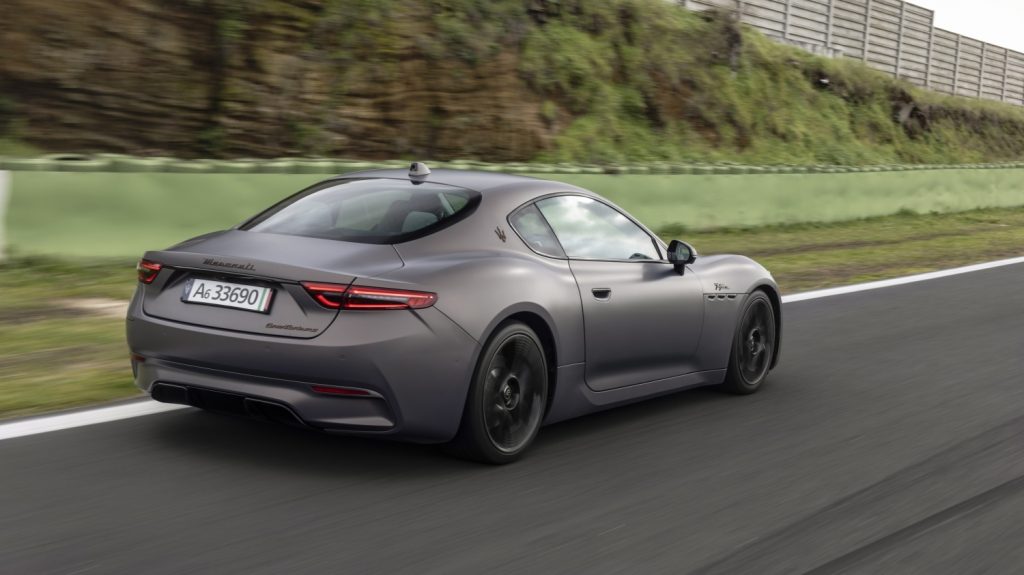
Performance figures are all well and good, but the most important thing about a Maserati – the main reason you would buy one, in fact – is because of how it makes you feel. And, if we’re being honest, the exotic, bellowing crescendo of a Maserati engine is a huge part of the magic. Which is why, I suspect, the recent diesel-powered Ghibli saloon is widely and rightfully regarded as a Maserati only in name.
Open the door, climb into the beautifully upholstered interior and the GranTurismo Folgore feels just as special as it should. Curiously, it also seems just as conventional as the exterior. The driving position is perfect. You sit low, with the wheel at your chest, and there’s no sensation that you’re sitting above a raft of batteries that so typical of other EVs.
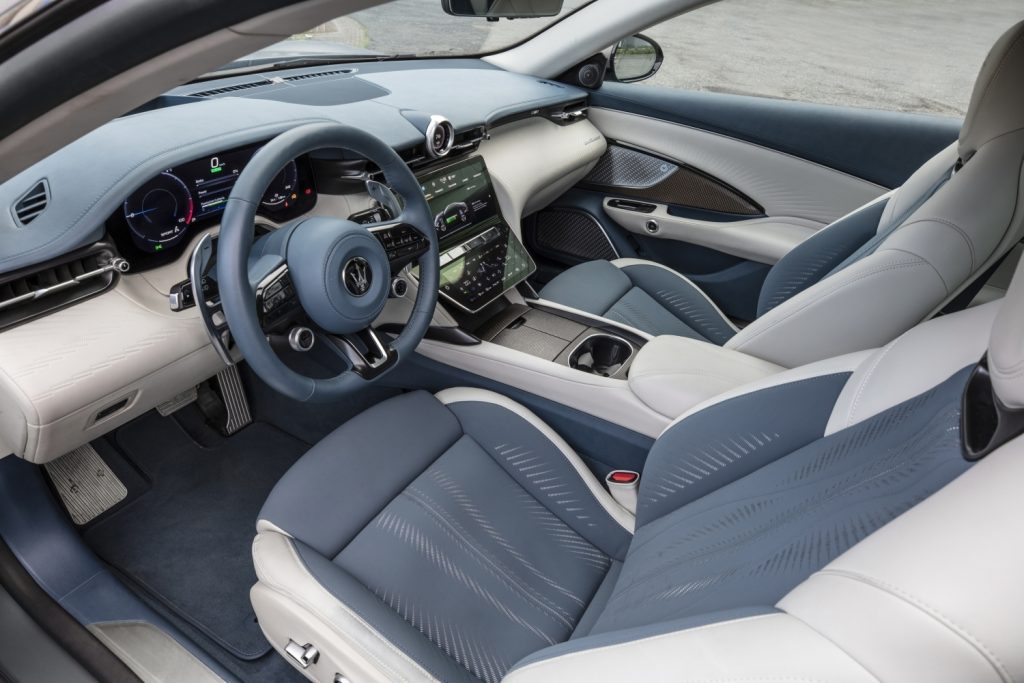
That’s because unlike with a Porsche Taycan, for example, the batteries are not arranged under the floor to form a skateboard chassis. Instead, 600kg of batteries are positioned in a ‘T’ shape in the space between the front wheels and windscreen, and back through the transmission tunnel. This arrangement benefits the car’s dynamics by providing a perfect 50:50 weight distribution while also reducing cornering inertia. In addition, this makes it possible for the Folgore and combustion-powered GranTurismo to share the same platform.
So, what about the rest of the cabin? Your eyes are immediately drawn to the centre of the dashboard, where you’ll see a modern digitised version of the classic Maserati clock and a responsive two-part infotainment screen. A bright, clear and crisp driver’s display screen is found behind the steering wheel.

The steering wheel and shift paddles will be familiar to anyone who’s been in a modern Alfa Romeo, but everything still looks and feels as luxurious and high quality as you would hope. The blue interior trim is another neat detail, because it is manufactured from recycled fishing nets.
A cursory stab of the start button is followed by a deep, artificial rumble that is closer to the sound of an engine than the spaceship-like moans and groans heard in other EVs. This gently builds as the car trundles out of the Vallelunga pitlane and onto the main straight. The noise, as you’ve probably guessed, is largely forgettable and not the defining part of the driving experience that the old crossplane Ferrari V8 used to be.
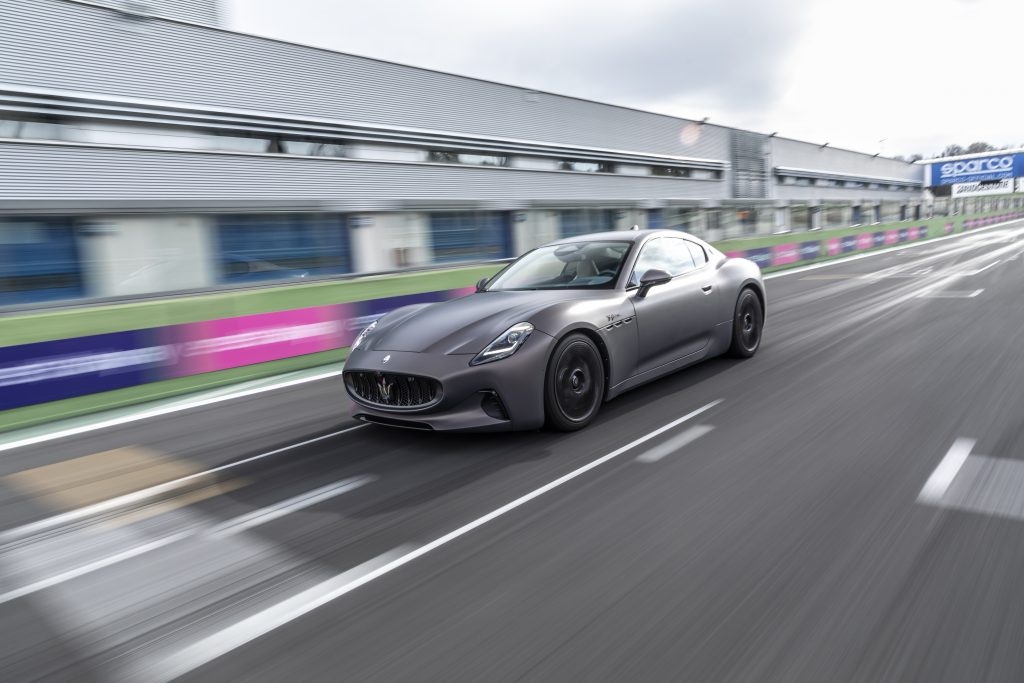
The lack of V8 histrionics is largely forgotten after a few laps of Vallelunga. The acceleration feels just as rapid as the figures suggest, and by the end of the pit straight you’re travelling at 300kph. Your confidence grows after hitting the brake pedal for the first right-hander. The Folgore stops well for a 2260kg vehicle, and there’s no weird sensation through the pedal as the car transitions between regenerative and caliper braking.
Handling is another area that feels totally organic, despite the fact that 500 messages per second are being sent from the ECU to the motors for torque vectoring. What this means from the driver’s seat is handling that feels more deft, agile and balanced than it should in a car that weighs about the same as a previous-gen Range Rover. The ride is also smooth, although driving on a circuit means it’s difficult to make a definitive judgement.
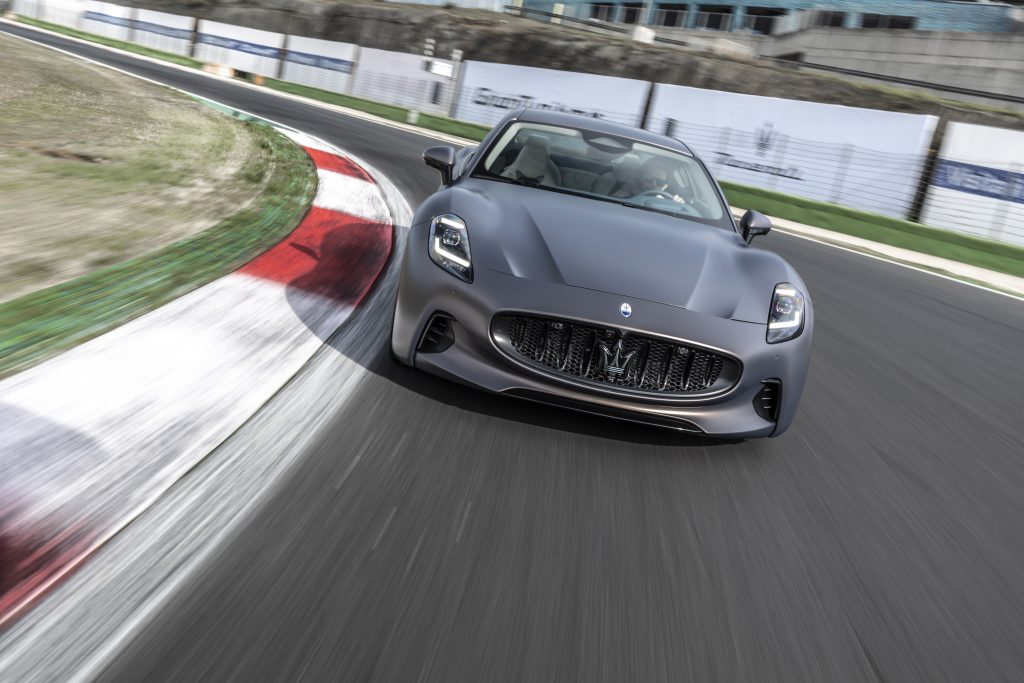
The GranTurismo was never supposed to be a sports car, so putting too much emphasis on its handling characteristics at the limit of adhesion rather misses the point. That said, it’s still dynamically capable enough without sacrificing the refinement and luxury expected in a grand tourer.
Does it feel special enough to be a Maserati? The answer is a resounding ‘yes’. The only lingering question is how effective the GranTurismo Folgore will actually be for, well, grand touring. The WLTP range of 280 miles sounds promising, but travel a long way at high speed, and that figure will inevitably tumble. Maserati is quick to point out that it’s possible to charge the battery from 20 percent to 80 percent in 18 minutes, but you’ll need to find a super-fast 300Kw charger for that, of which there are currently very few.
But I suspect there are few people who use a GT car for actual grand touring these days. As a practical supercar that seats four in comfort, though, there’s little that can beat Maserati’s first EV. The new GranTurismo and MC20 are all the proof you need that, at long last, Maserati is back.
Prices start from £190,000. For more information click here.
